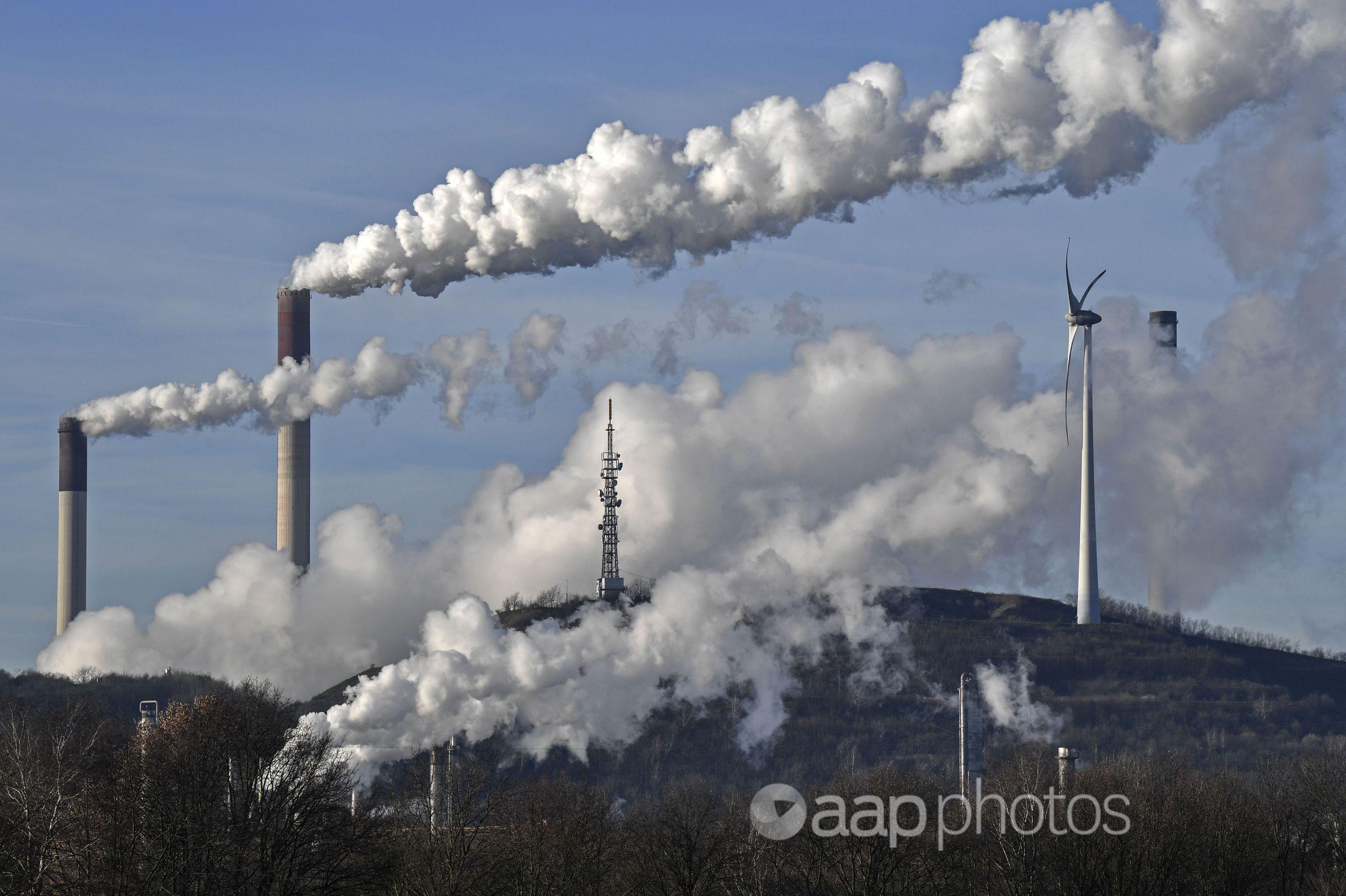AAP FactCheck Investigation: Have New Zealand’s carbon emissions increased over the past three years under the Labour-led government?
The Statement
“Actually our carbon emissions have gone up in the last three years, not down.”
Judith Collins, National Party leader, September 30, 2020.
The Analysis
In 2017, the Labour Party campaigned on making climate change a priority if it were in government, but three years on the National Party says greenhouse emissions have actually increased in New Zealand.
During Labour’s 2017 campaign launch, party leader Jacinda Ardern called climate change “my generation’s nuclear free moment”, citing NZ’s 33-year-old nuclear free policy which is often viewed as a defining moment in its history.
However during the Newshub Leaders Debate on September 30, National Party leader Judith Collins said the government had made no progress on reducing carbon emissions. (Video mark 1hr 8min 45secs).
“Actually our carbon emissions have gone up in the last three years, not down,” Ms Collins said. “So all the talk, all the fluffing around about emergencies, tell you what, actually it’s got worse not better under this particular leader.”
AAP FactCheck examined Ms Collins’ statement that carbon emissions increased during the past three years under the Labour coalition government.
Ms Collins’ office told AAP FactCheck her statement was based on net emissions figures from the Ministry for the Environment, released in December 2019, which included recorded greenhouse gas levels from 1990 to 2017 and projected greenhouse gas levels from 2018 to 2050.
The figures show net greenhouse gas emissions were 56.895 million tonnes of CO2 equivalent (Mt CO2-e) in 2017 and were projected to increase 17 per cent to 66.597Mt CO2-e in 2020 (see Data file, tables ‘Estimated historical’ and ‘Projected’).
Net emissions account for forestry and land use changes that can remove, and add, carbon dioxide from the atmosphere. Gross emissions were expected to stay about the same, rising 0.09 per cent from 80.853Mt CO2-e in 2017 to 80.928Mt CO2-e in 2020.
The historical figures show gross emissions have changed little since 2001, rising and falling between 78Mt CO2-e and 83Mt CO2-e, and were predicted to decline steadily from 2020.
Recorded net emissions show rates have varied between 54Mt and 57Mt CO2-e since 2012, while the projections show net emissions were expected to increase until 2025 and then steadily decline.
The figures were released as part of the Fourth Biennial Report, which outlines NZ’s progress on the United Nations Framework Convention on Climate Change.
A summary of the report said net emissions were expected to increase in the short term as forestry planted in the late 1980s and early 1990s was harvested, but noted that projections were “inherently uncertain” (page 3).
The figures were updated in April this year as part of a report, New Zealand’s Greenhouse Gas Inventory 1990-2018, which included recorded figures for 2018. These show gross emissions were expected to decline slightly overall, from 79.6Mt CO2-e in 2017, to 78.9 Mt CO2-e in 2020.
Figures accompanying the report show recorded net emissions declined slightly between 2017 and 2018, from 56.93Mt CO2-e to 55.468Mt CO2-e. Gross emissions had also declined slightly, from 79.64Mt CO2-e to 78.862Mt CO2-e.
A summary of the report notes (Page 1): “Gross emissions in 2018 were one per cent lower than 2017 levels and net emissions were three per cent lower. This is mainly due to a decline in emissions from manufacturing and construction, and public electricity and heat production; and a reduced rate of deforestation and an increase in the production of harvested wood products.”
The report did not include updated projections of net greenhouse emissions.
However, a report released by the Ministry for the Environment in June, which reviewed the proposed settings of the Emissions Trading Scheme (ETS), said emissions were expected to decline in 2020 due to COVID-19.
The report found “emissions from many sectors will be substantially suppressed in the short-term” due to COVID-19 lockdowns and emissions could also be reduced in the medium to long term “if any major industrial facilities close and/or international tourism fails to rebound” (page 32). But it noted “there is substantial uncertainty at this stage about both the duration and severity of the COVID-19 impact” (page 32).
The ministry produced three emissions scenarios to model the impact of COVID-19 between 2020 and 2025 and all show a significant decrease in emissions in 2020 (page 33).
Massey University emeritus professor Ralph Sims told AAP FactCheck that “gross emissions have been fairly stable since 2012 and net emissions declined slightly from 2013 to 2018 but tend to fluctuate greatly with land use change that is hard to measure”.
Prof Sims said projections were “anybody’s guess at the time and don’t mean much” and the impact of COVID-19 would make any earlier projections “null and void” due to the impact of lockdowns on transport and industry.
He said recorded figures were also retrospectively changed as more information was gathered, making even recent figures somewhat uncertain.
Victoria University of Wellington physical geography professor James Renwick, a leading researcher on climate change, said it was difficult to assess the record of the government over the past three years due to the lag in figures being reported.
“It doesn’t have a lot of meaning to look at figures for the last three years,” Prof Renwick told AAP FactCheck in an email.
“In terms of policy, a huge amount has happened because of the Zero Carbon Act and the emissions budgets being set in the Emissions Trading Scheme. We just haven’t seen that flow through to actual emissions yet.”
The Verdict
AAP FactCheck found it was not possible to categorically establish whether carbon emissions have increased over the past three years under the Labour-led government.
Projections released in December 2019 show net greenhouse emissions were expected to increase slightly between 2017 and 2020, while gross emissions were expected to remain roughly the same.
However, contrary to the projections, the most recent recorded figures, which cover 2018, show there was a slight decline in net greenhouse emissions in the first year of the Labour-led government.
There are no figures recording actual emissions for 2019 or 2020 as yet. However, projections from the Ministry for the Environment indicate an expected decrease in 2020 due to COVID-19.
Ambiguous – It is not possible to determine the veracity of the claim.
* AAP FactCheck is accredited by the Poynter Institute’s International Fact-Checking Network, which promotes best practice through a stringent and transparent Code of Principles. https://aap.com.au/
All information, text and images included on the AAP Websites is for personal use only and may not be re-written, copied, re-sold or re-distributed, framed, linked, shared onto social media or otherwise used whether for compensation of any kind or not, unless you have the prior written permission of AAP. For more information, please refer to our standard terms and conditions.


















